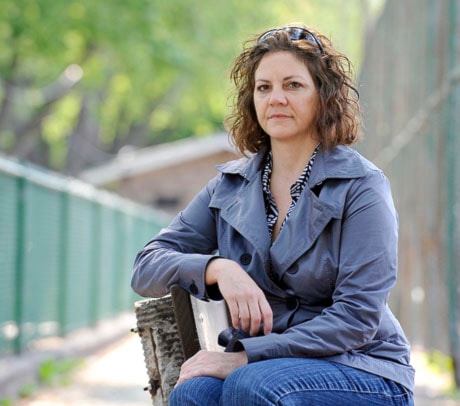MONTREAL — A Montreal woman says Canadian border agents made her strip to see if she had a pink tattoo on her buttocks after mixing her up with an alleged criminal.
Sylvie Menard, who has no history of trouble with the law, returned home from a relaxing Mexico vacation in April to a stressful and humiliating airport encounter with authorities.
Menard, manager of a Montreal wine business, is still seeking an explanation as to why she was handcuffed and locked up, then told to undress.
“They don’t have enough information to identify who’s a criminal and who isn’t,” she said in an interview. “And that’s the big problem.”
Dominique McNeely, a spokesman for the Canada Border Services Agency, said he could not discuss details of the case.
But he said false matches do happen.
“We have to perform these checks to be absolutely sure,” McNeely said. “We can’t let someone enter the country unless we’re absolutely certain about their identity.”
Menard, 43, said that after being questioned by a customs official she was pulled aside for secondary screening. Her luggage was swabbed for drug residue, and her name was run through a computer.
Next a border officer read out Menard’s rights, handcuffed her and led her to a cell.
She began to wonder if someone had slipped drugs into her bag.
“I was really stressed,” she said. “I thought maybe somebody put something in my luggage.”
As far as Menard can tell, her relatively common name matched that of a woman with the same birth date who was sought by police.
She tried to explain that they had the wrong person, but police were summoned. Menard says it felt like a bad dream. Meantime, her boyfriend was waiting for her in the arrivals area.
Menard was astounded at what came next. A female border officer asked her to pull down her pants and expose her buttocks to see if she had a distinguishing mark — a large pink tattoo.
Nothing was there but the officer later returned and made her disrobe again to check whether the tattoo had been removed with a laser.
“I showed them twice that there was no pink tattoo there, because they came back to see if it was erased.”
McNeely said travellers are told they have a right to speak with a supervisor before being subjected to an invasive search.
But that wasn’t clear to Menard.
Further police computer checks apparently turned up a physical description that showed the other Sylvie Menard was indeed a different person.
Menard says a police officer suggested she change her name to avoid future confusion.
“That was the solution.”
McNeely confirmed that name and birth date are the key personal identifiers matched against agency databases.
He said almost 100 million people enter Canada annually, and the number of false matches is relatively small. Most problems are cleared up quickly, he added.
